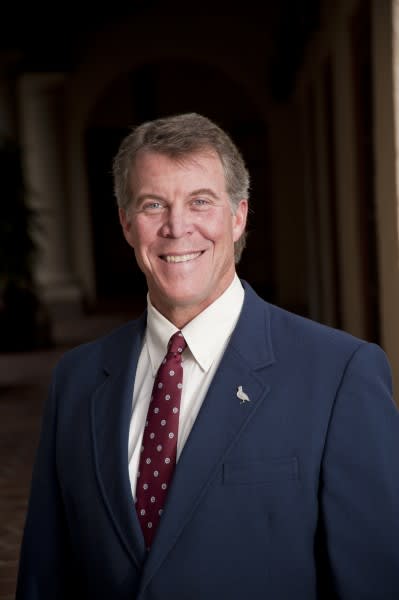Leaders of Conservation: NBCI Director Don McKenzie
Daniel Xu 07.02.14

This interview with National Bobwhite Conservation Initiative Director Don McKenzie is part of OutdoorHub’s Leaders of Conservation series, in which we sit down with leaders of the North American conservation movement to learn more about the stories behind their organizations and people.
It used to be that if you were to walk through any forest or field in the eastern half of the United States, you would hear the unmistakable whistle of a bobwhite quail. You can still find these elusive birds today, but their numbers have dropped sharply in the last half century due to changes in habitat and land use. Despite being one of North America’s most popular game birds, the plight of the bobwhite went unnoticed for years. Before the turn of the millennium, only two states held dedicated bobwhite restoration programs. Nationwide, it is believed that the bobwhite population has dropped by more than 65 percent since 1990.
“Bobwhites are one of the most treasured, storied, and romanticized game species on the continent. But because of changes over many decades and in how we use land, their numbers have dropped, to the point where they went from one of the most popular game birds in the country to becoming nearly unhunted across most of their range,” said Don McKenzie, the Director of the National Bobwhite Conservation Initiative (NBCI).
The NBCI was breathed into life on paper in 2002 as part of a plan by the Southeastern Association of Fish & Wildlife Agencies to protect the bobwhite quail. The plan attracted the attention of hunters and conservationists across the country, and it was not long before the NBCI became a very real entity in its own right.
“One of the big challenges of bobwhite restoration is that bobwhites are a resident game species, as opposed to migratory game species. It means that the federal government has little of a direct role in bobwhite conservation, so it’s up to the states,” Don stated. “It must be said that individual states have restored many wildlife species over the decades with many success stories, but the plight of the bobwhite is a complicated one. It requires a multifaceted approach and we didn’t have a central authority that can give us that guidance like the Fish and Wildlife Service. We had 25 separate states. So part of the NBCI’s mission is to unify and organize these states and collectively address an issue that is too big for any one of those states to handle on its own.”
Never heard a bobwhite call? Bobwhites are named for their whistle and you can find out why below:
The budding Initiative’s first goal was to create a clear strategic plan for uniting the myriad efforts of conservationists and state agencies to preserve bobwhite habitat. To facilitate this, the NBCI created a massive database called the Geographic Information System to help biologists and organizations coordinate programs to protect the bobwhite not only in individual states, but also in all of the 25 states with a bobwhite population. Now partnered with wildlife agencies, universities, the US Department of Agriculture, and conservation groups like Quail Forever and the North American Bird Conservation Initiative, the NBCI is poised to make great strides.
“Bobwhites used to be part of the hunting culture. I was raised in Alabama, and in my observation, bobwhite hunting in the South used to be as much a part of growing up as barbecue and fried catfish and football,” Don shared. “We would not dream of losing those things from our culture and way of life.”
But the bobwhite seemed to have slipped through the cracks. The population decline can be attributed to many things, including invasive grasses, predators, pesticides, and the loss of prescribed burning in the East. The biggest issue, as with any decline in wildlife, is the loss of habitat.
“It wasn’t because somebody did something wrong. It was because humans have, over time, started doing less and less active management of the forests.”
NBCI Forestry Coordinator Mike Black gives a brief summary on how to manage forests for bobwhite quail:
Over the past few years, the NBCI has ensured the creation of hundreds of thousands of acres of bobwhite habitat through the establishment of “bobwhite buffers,” a part of the USDA’s Conservation Reserve Program. More than 100,000 acres of longleaf pine were also planted across nine states.
“Bobwhites have been declining slowly for 50 years and only relatively recently have people realized that there is a serious issue here,” Don said. “That needs to be taken care of.”
Don explained that the Initiative’s most pressing goal now is to promote awareness of the decline in bobwhites, especially in the younger generation, who may have not grown up with the benefit or awareness of a large bobwhite population.
“My goal is to make myself irrelevant,” Don said, laughing. “When I say that, I mean that I want to organize and build up interest in bobwhite conservation, to get people activated and mobilized well enough that they will do well enough alone that they will no longer need Don McKenzie. I hope that happens before I retire.”
We would like to thank Don for taking the time to talk with us. For more profiles of leaders of conservation, please read our recent interview with Pheasants Forever/Quail Forever President and CEO Howard Vincent.

